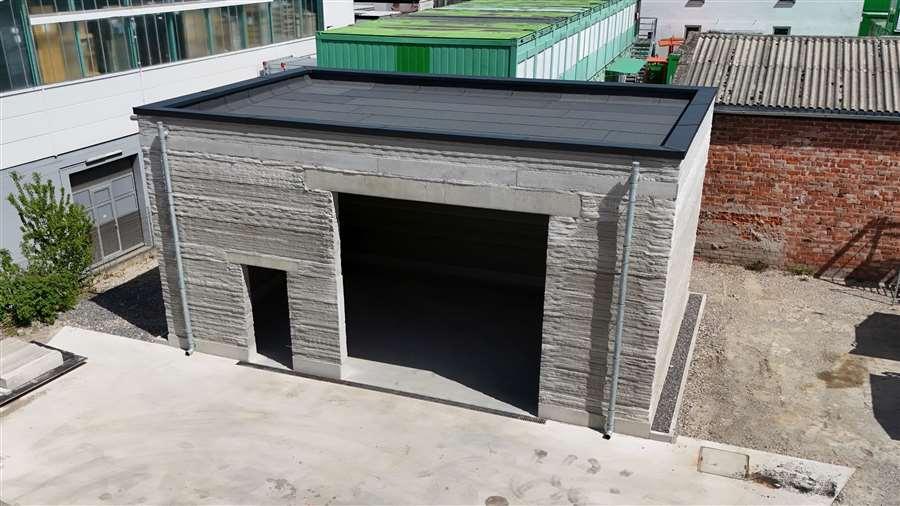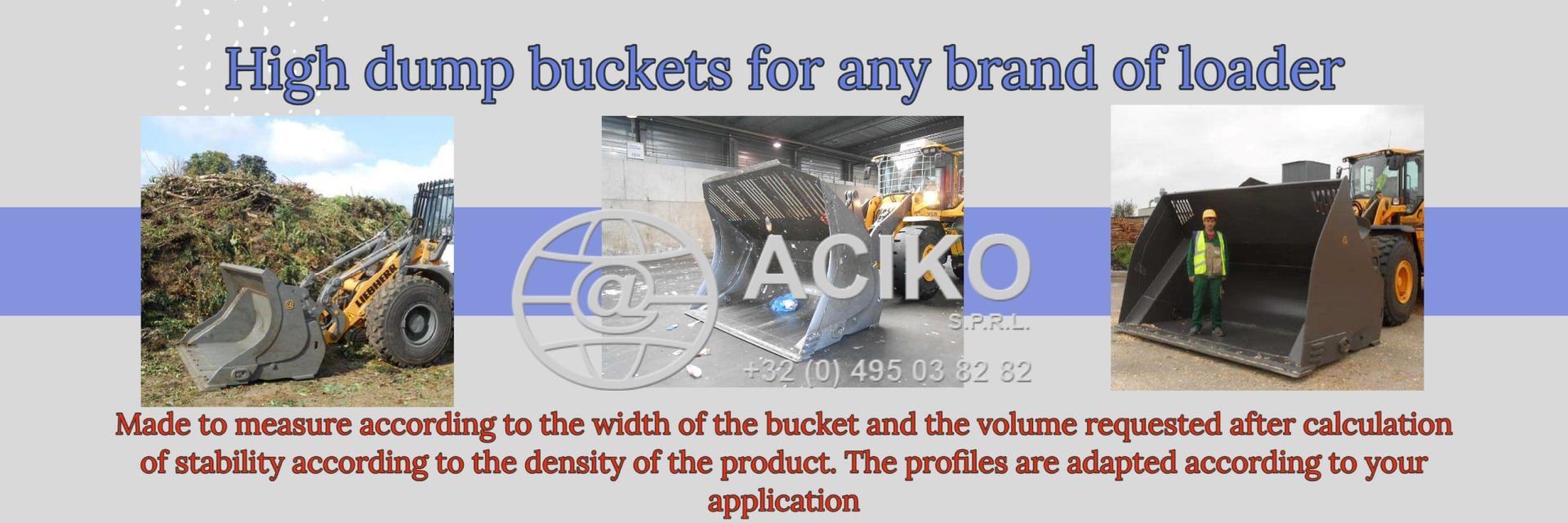R.E.News future Technology-Züblin constructs ‘world first’ load-bearing concrete walls with 3D printer
 10/05/24-FR-English-NL-footer
10/05/24-FR-English-NL-footer
Züblin construit une « première mondiale » en béton porteur avec une imprimante 3D

 Züblin uses a Putzmeister 3D printer to construct a warehouse for Strabag in Germany (Image: Putzmeister)
Züblin uses a Putzmeister 3D printer to construct a warehouse for Strabag in Germany (Image: Putzmeister)
Züblin, une société d'ingénierie de construction basée en Allemagne et filiale de Putzmeister et Strabag, a annoncé avoir construit un bâtiment à partir d'une seule impression 3D avec des murs porteurs en béton ; une « première mondiale » selon l’entreprise.
Le bâtiment est le plus récent entrepôt de Strabag Baumaschinentechnik International à Stuttgart, en Allemagne, et sa construction permettra à la fois de créer une nouvelle installation pour Strabag tout en testant les capacités et les processus d'impression 3D de Züblin.
Grâce à l'imprimante à béton mobile KARLOS de Putzmeister, la flèche du mât de la machine a une portée de 26 mètres. Selon Züblin, sa vaste portée permet d'appliquer « du béton en plusieurs couches précisément sur la base d'un plan prédéfini et numérique via une tête d'impression spéciale ».
Jusqu’à présent, les défis de l’impression 3D sur béton résidaient principalement dans le manque d’évolutivité de la technologie pour les projets à grande échelle. "L'impression a été principalement réalisée avec des imprimantes dites à portique, qui sont limitées à la production de petits bâtiments", a expliqué Züblin.
La société a ajouté que KARLOS permet plus de flexibilité et de portée, ce qui offre un potentiel d'évolutivité, même pour les projets à grande échelle.
Fournissant une pâte cimentaire sous une forme rectangulaire, un peu comme la forme d'une brique (par opposition à un bord arrondi comme la plupart des imprimantes à béton 3D), les murs carrés sont capables de supporter le poids du bâtiment.
En combinaison avec l'électrification, la planification numérique et l'utilisation d'un modèle BIM sur ce projet, Züblin a déclaré qu'elle espérait développer de nouvelles méthodes de construction pour l'avenir.
« La combinaison des étapes de production depuis la planification numérique du modèle BIM (Building Information Modeling) jusqu'à la mise en œuvre par imprimante 3D révolutionne les processus de construction. Les processus de travail sont considérablement rationalisés et accélérés grâce à l’automatisation », a déclaré l’entreprise.
« Outre la suppression totale du coffrage, les avantages économiques et écologiques du procédé incluent la réalisation de sections de murs solides en une seule opération et l'utilisation de bétons à teneur réduite en CO2.
« En utilisant uniquement de l'électricité verte pour la machine entièrement électrique et en utilisant des bétons à faible teneur en CO2, Züblin et Putzmeister apportent une contribution importante pour rendre la construction de bâtiments plus durable à l'avenir. »
NJC.© Info Zûblin
----------------------------------------------------------------------------------------------------------
 10/05/24-English
10/05/24-English
Züblin constructs ‘world first’ load-bearing concrete walls with 3D printer

 Züblin uses a Putzmeister 3D printer to construct a warehouse for Strabag in Germany (Image: Putzmeister)
Züblin uses a Putzmeister 3D printer to construct a warehouse for Strabag in Germany (Image: Putzmeister)
Züblin, a Germany-based construction engineering company and subsidiary of Putzmeister and Strabag, announced it constructed a building from a single 3D print with load-bearing concrete walls; a ‘world first’ according to the company.
The building is Strabag Baumaschinentechnik International’s newest warehouse in Stuttgart, Germany, and its construction will both create a new facility for Strabag while testing Züblin’s 3D printing capabilities and processes.
Using Putzmeister’s KARLOS mobile concrete printer, the machine’s mast boom has a 26-metre reach. It’s extensive span, Züblin said, allows the application of “concrete in several layers precisely on the basis of a predefined and digital blueprint via a special print head.”
Until now, the challenges of 3D concrete printing have mainly been the lack of scalability of the technology for large-scale projects. “Printing has mainly been done with so-called portal printers, which are limited to the production of smaller buildings,” said Züblin.
The company added that KARLOS allows more flexibility and range, which provides the potential for scalability – even for large-scale projects.
Delivering cementitious paste in a rectangular method, much like the form of a brick (as opposed to a rounded edge like most 3D concrete printers), the squared walls are able to support the weight of the building.
Combined with electrification, digital planning, and use of a BIM model on this project, Züblin said it’s hoping to develop novel construction methods for the future.
“The combination of the production steps from the digital planning of the BIM model (Building Information Modelling) to the implementation by 3D printer revolutionizes the processes in construction. Work processes are significantly streamlined and accelerated by automation,” said the company.
“In addition to the complete elimination of formwork work, the economic and ecological advantages of the method include the production of solid wall cross-sections in a single operation and the use of CO2-reduced concretes.
“By using only green electricity for the all-electric machine and using CO2-reduced concretes, Züblin and Putzmeister are making an important contribution to making building construction more sustainable in the future.”
NJC.© Info Zûblin
----------------------------------------------------------------------------------------------------------------
 10/05/24-NL
10/05/24-NL
Züblin bouwt ‘wereldprimeur’ dragende betonwanden met 3D-printer

 Züblin uses a Putzmeister 3D printer to construct a warehouse for Strabag in Germany (Image: Putzmeister)
Züblin uses a Putzmeister 3D printer to construct a warehouse for Strabag in Germany (Image: Putzmeister)
Züblin, een in Duitsland gevestigd bouwtechnisch bedrijf en dochteronderneming van Putzmeister en Strabag, kondigde aan dat het een gebouw heeft gebouwd op basis van een enkele 3D-print met dragende betonnen muren; een ‘wereldprimeur’ volgens het bedrijf.
Het gebouw is het nieuwste magazijn van Strabag Baumaschinentechnik International in Stuttgart, Duitsland, en de constructie ervan zal zowel een nieuwe faciliteit voor Strabag creëren als de 3D-printmogelijkheden en -processen van Züblin testen.
Met behulp van de KARLOS mobiele betonprinter van Putzmeister heeft de mastgiek van de machine een bereik van 26 meter. De grote omvang maakt het volgens Züblin mogelijk om “beton in meerdere lagen aan te brengen, precies op basis van een vooraf gedefinieerde en digitale blauwdruk via een speciale printkop.”
Tot nu toe waren de uitdagingen van 3D-betonprinten vooral het gebrek aan schaalbaarheid van de technologie voor grootschalige projecten. “Het printen gebeurt vooral met zogenaamde portaalprinters, die beperkt zijn tot de productie van kleinere gebouwen”, aldus Züblin.
Het bedrijf voegde eraan toe dat KARLOS meer flexibiliteit en bereik mogelijk maakt, wat mogelijkheden biedt voor schaalbaarheid – zelfs voor grootschalige projecten.
Door cementpasta op een rechthoekige manier af te leveren, vergelijkbaar met de vorm van een baksteen (in tegenstelling tot een afgeronde rand zoals de meeste 3D-betonprinters), kunnen de vierkante muren het gewicht van het gebouw dragen.
Gecombineerd met elektrificatie, digitale planning en het gebruik van een BIM-model voor dit project, zei Züblin dat het hoopt nieuwe bouwmethoden voor de toekomst te ontwikkelen.
“De combinatie van de productiestappen vanaf de digitale planning van het BIM-model (Building Information Modelling) tot de implementatie door 3D-printer zorgt voor een revolutie in de processen in de bouw. Werkprocessen worden aanzienlijk gestroomlijnd en versneld door automatisering”, aldus het bedrijf.
“Naast de volledige eliminatie van bekistingswerk omvatten de economische en ecologische voordelen van de methode onder meer de productie van massieve wanddoorsneden in één bewerking en het gebruik van CO2-gereduceerd beton.
“Door alleen groene stroom te gebruiken voor de volledig elektrische machine en CO2-gereduceerd beton te gebruiken, leveren Züblin en Putzmeister een belangrijke bijdrage aan het duurzamer maken van de bouw in de toekomst.”
NJC.© Info Zûblin
----------------------------------------------------------------------------------------------------------------
Date de dernière mise à jour : 08/05/2024
















